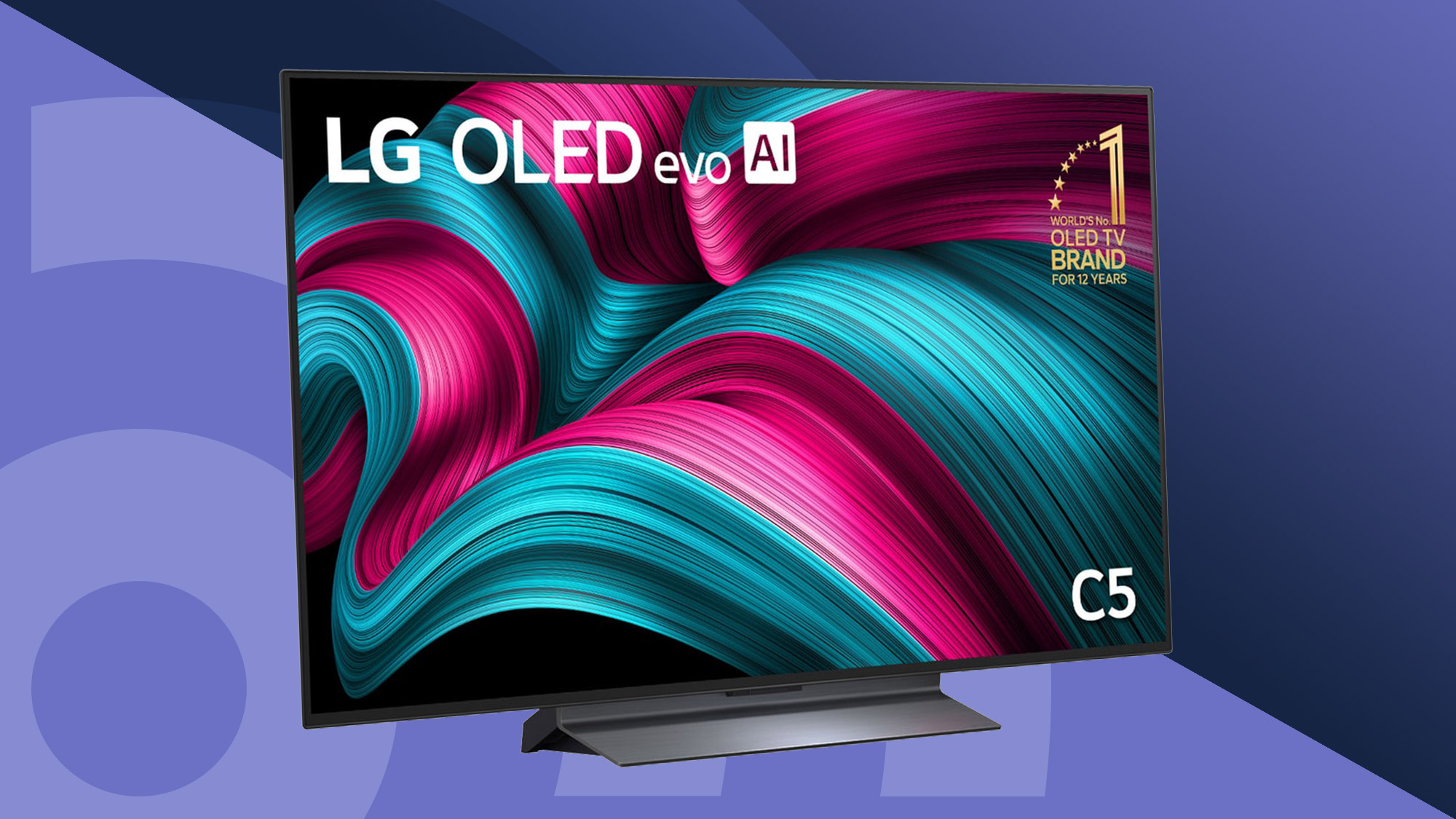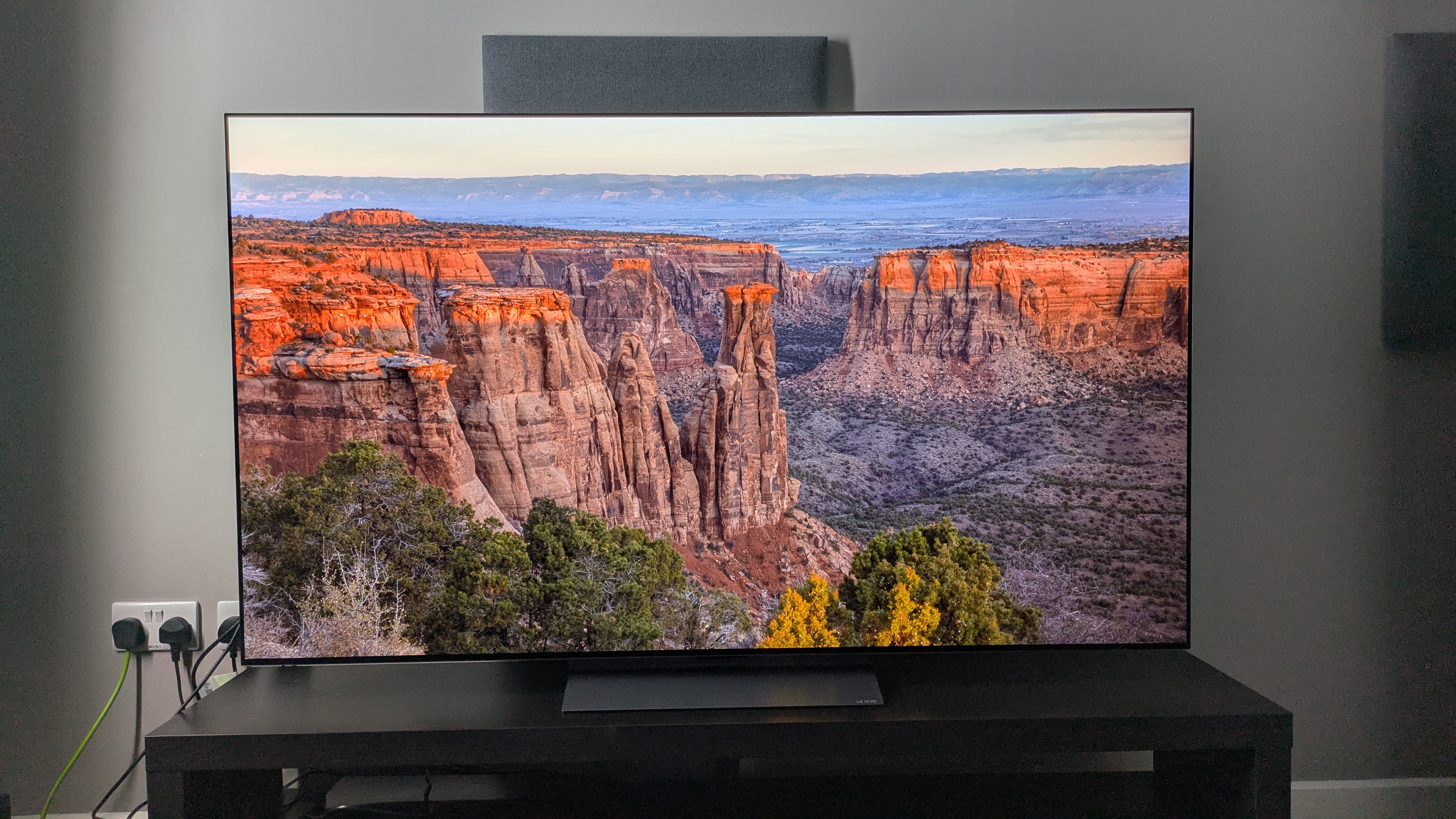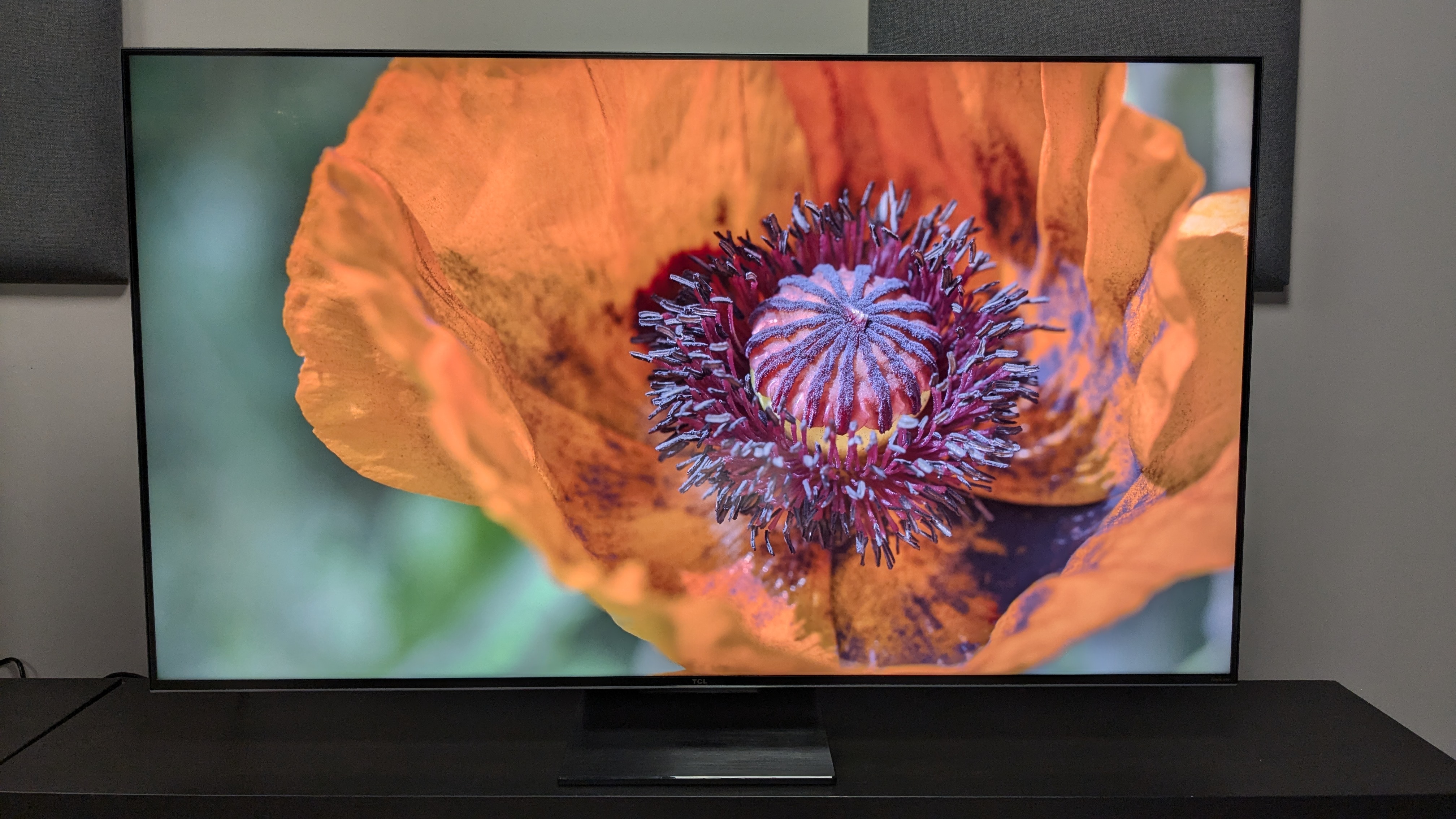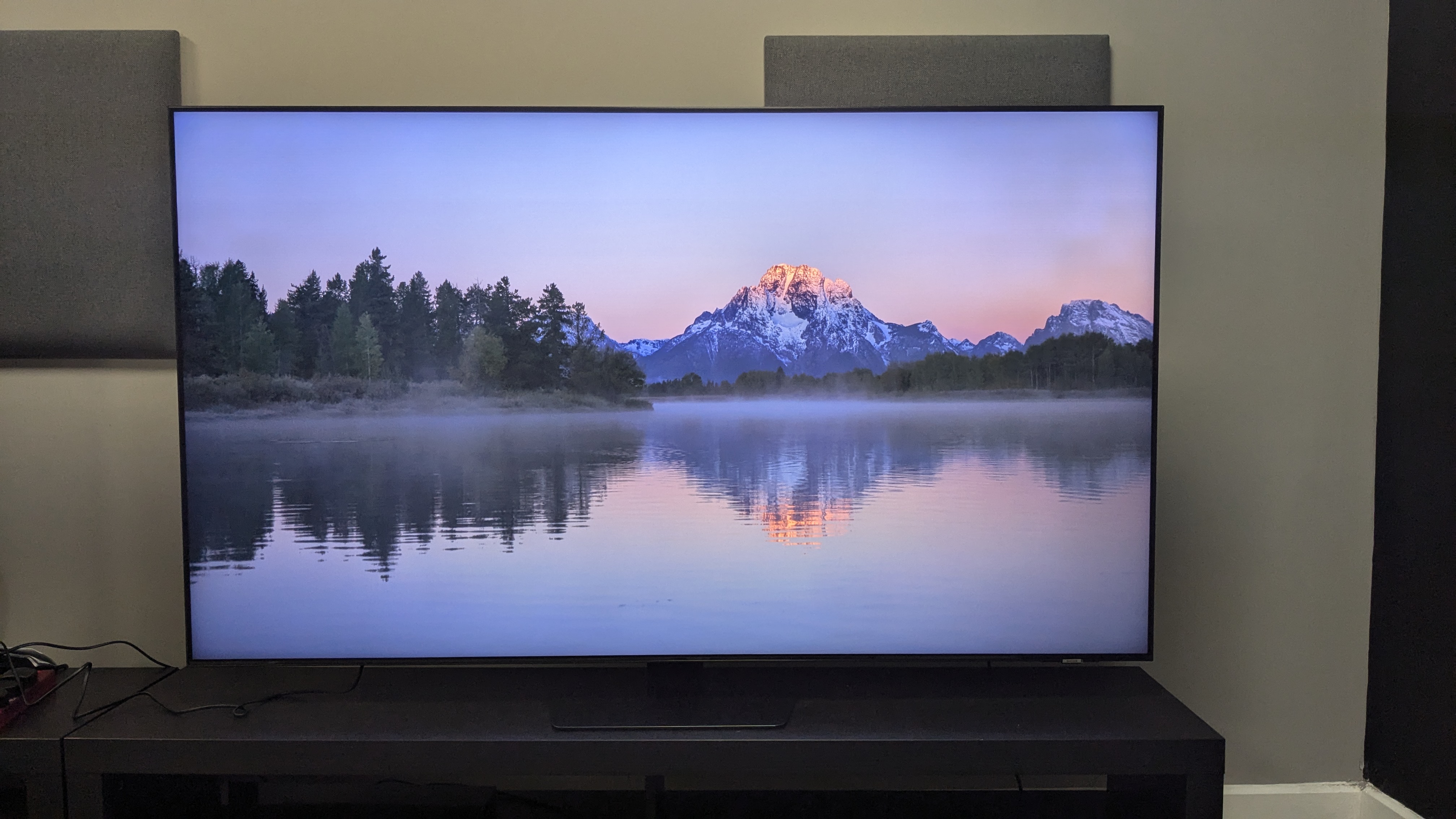The best 48- and 50-inch TVs in Australia 2025: top picks for every budget
Save on size without sacrificing quality for your new home screen

The best 48- and 50-inch TVs in Australia are ideal for people who are either short on space in their main room, who want to furnish a second, smaller room, or who simply just don't want to invest in a bigger screen. Because of their smaller size, 48- and 50-inch 4K TVs have less screen real estate to fill in when 'upscaling' HD content too, which can work to their advantage.
The equally good news is that you still have a decent amount of choice when it comes to choosing a screen of this size. However, we are seeing the level of choice in Australia slowly dwindle (especially in the more budget-focused sector), with the best 65-inch TVs slowly becoming the norm for a minimum size. But, you can still find great quality at this smaller level. When OLED TVs were first launched, for example, it was rare to find them in sizes smaller than 55-inches, but thanks to advancements in manufacturing processor, you can now find the best OLED TVs at the right size for you.
It's also worth noting that aside from being home cinema champions and much as with the best TVs of larger sizes, the best 48- and 50-inch TVs in Australia offer impressive specs to suit a variety of needs. This often includes PS5 and Xbox Series X-friendly features also found in the best gaming TVs.
With all this in mind, you’ll find our picks for the top 48- and 50-inch TVs that Aussies can buy right now.
The best 48 and 50-inch TVs for 2025
Why you can trust TechRadar
Best 48- to 50-inch TV for most people

Specifications
Reasons to buy
Reasons to avoid
✅ You want a great TV for movies: The C5 is fantastic when it comes to blacks, brightness and contrast, and when fed HDR content, it becomes a sensational choice for movie fans.
✅ You want a great TV for gaming: With 4 HDMI 2.1 ports that support 4K 120Hz (and up to 144Hz for PC gaming), the C5 is an excellent gaming TV.
❌ You want the brightest TV you can buy: While the C5 does serve up excellent brightness levels for an OLED TV, the fact remains mini-LED TVs such as the Samsung QN90D (#4 on this list) can go brighter.
❌You don't have a huge budget: Despite being in a smaller guise, the LG C5 can still be a pricey TV compared to many others on this list. The LG C4 also offers greater overall value.
The LG C5 is a jack-of-all-trades TV, and is our top recommendation for most people no matter which screen size you want. It delivers a superb picture that suits both movies and gaming, supports a fantastic suite of gaming features, an intuitive smart TV platform and more. It's no wonder LG's C series OLEDs have been so popular in the 48-50-inch size range when it covers all bases.
Picture quality is the C5's highlight, with vibrant colours, superb contrast, and excellent detail thanks to its built-in Alpha 9 Gen 8 AI processor. LG has also managed to give the C5 a further boost in brightness compared to its predecessor, although admittedly it is relatively minor.
Gamers will also find much to love in the C5, thanks to it being fitted with four HDMI 2.1 ports that support 144Hz refresh rate, VRR (including Nvidia GSync and AMD FreeSync), ALLM, HGiG, and Dolby Vision Gaming. We can't imagine many gamers will feel shortchanged by this impressive feature list. It also comes with LG's Game Optimiser, designed to adjust settings easily during gameplay. At 48 inches, the C5 is a great size for both living room and bedroom gaming.
While the C5 doesn't have the best built-in audio and doesn't support HDR10+, it does nearly everything else right, including having a sleek design and user-friendly smart TV platform. Those are just some reasons why it's the best 48-50-inch TV for most people.
Best budget 48- to 50-inch TV

Specifications
Reasons to buy
Reasons to avoid
✅ You want a great picture for the money: It won't beat more premium TVs, but the C755's picture is more than impressive for a TVat this price.
✅ You want an affordable gaming TV: The C755 has great gaming features, including 4K 144Hz and VRR, and solid gaming performance for the money.
❌ You'll be watching from an angle: The C755's picture quality takes a hit during off-axis viewing, with backlight blooming and a fade in contrast.
❌ You want the best TV for sport: The C805's average motion handling means it struggles with sport and fast-paced movie scenes, though there are picture adjustments to improve this.
The TCL C755 (known as the C805 in the UK) delivers a truly impressive picture considering how little cash you're asked to part with. As expected, you can and will find better, but you'll also need to spend an awful lot more money (just look at the LG C4 above as a clear example).
We found the C755's picture hard to fault considering its price tag, however, giving it good marks for its contrast, rich black levels and admirable shadow detail. Colours are bold and punchy, while textures are that extra bit of crisp detail that you might not expect of a screen in this price bracket.
It's also an excellent option for gamers, with an enviable specs list that we've seen even some more expensive TVs can't match. You get full 4K 120Hz support, VRR, ALLM and even Dolby Vision Gaming as an extra special added bonus. Of course, because of the ultimate limitations with the screen's capabilities based on its price, graphics won't worry the very best gaming TVs, but for gamers on a budget, there is much to like here.
Motion handling, viewing angles and built-in sound are areas where the TCL C755 falls down a tad, although the former can be fixed to a good degree with some tweaks to the settings, while the latter can be alleviated by adding one of the best soundbars. All in all, we think the TCL C755 represents outstanding value.
Read our full TCL C755 review
Best mid-range 48- to 50-inch TV
Best 48-50 inch mini-LED TV

Specifications
Reasons to buy
Reasons to avoid
✅ You want the best TV for watching sports: The QN90D’s high brightness and anti-reflection screen make it a perfect choice for daytime sports viewing.
✅ You want a great TV for gaming: With 4K 144Hz, ALLM, and VRR (AMD FreeSync Premium Pro) support across its four HDMI 2.1 ports and ultra-low input lag, the QN90D is a full-featured gaming TV.
❌ You want to save money: The QN90D is an excellent all-around TV for movies, sports, and gaming, but it’s also more expensive than the other options in this guide.
❌ You want Dolby Vision HDR support: Like all Samsung TVs, the Q80D supports the HDR10 and HDR10+ high dynamic formats, but not Dolby Vision.
The Samsung QN90D covers a lot of bases with a vibrant yet balanced picture and an ability to handle fast-moving images with ease (which makes it perfect for viewing sports). It also has a good stock of gaming features, a premium design and effective built-in sound.
In our review, we were particularly impressed with the QN90D's picture detail, which was "only seen better on OLED TVs like the Samsung S95D". Textures look realistic regardless of what image is on screen. Colours are bold but still maintain a natural look and black levels are rich.
Gamers will also be impressed by the QN90D. It supports a nearly full suite of gaming features including 4K 144Hz, ALLM, and VRR (AMD FreeSync Premium Pro) across four HDMI 2.1 ports and has excellent gaming performance with a low 9.9ms input lag time. The QN90D is a solid choice for those looking for a bright TV for gaming.
The QN90D also has a trim, sleek appearance and delivers punchy, expansive sound. So, why isn't it number one on our list? The LG C4 delivers equivalent performance (minus the brightness) and features to the QN90D but also supports Dolby Vision HDR and has richer contrast for movies. The QN90D is a fantastic alternative, however, and a great choice for viewing in bright rooms.
Read our full Samsung QN90D review
Best 50-inch TV FAQ
What is the best 50-inch smart TV?
As with anything, what's best for you might not necessarily be best overall. For sheer picture quality and premium-level power, though, it's hard to go past the might of the LG C4.
But in terms of overall value? The TCL C755 is a great option thnaks to its balance of performance, quality and features worth well more than the asking price.
How much should you pay for a 50-inch TV?
If you're on the hunt for a TV with a smaller screen size, there's every chance you're doing so because:
(a) You're looking for a second TV to add to your home
Or
(b) You're shopping on a budget
If you're a serious cinephile who wants nothing but the best quality picture from any TV on display in your home, you should consider looking at more premium models, usually ranging from AU$2,000-AU$3,000. Thankfully, you don't have to pay that much for a high quality TV these days.
What should you look for in a 50-inch TV?
At a minimum, what you should be looking for in a 50-inch TV is a balance between quality and value. If you're a gamer, you'll probably want to find a TV offering HDMI 2.1 ports with gaming features such as variable refresh rates (VRR) and auto low-latency mode (ALLM).
If you're a cinephile, you're looking for features like resolution, panel type (eg. OLED, QLED), contrast, colours and HDR support. You should also check to see if your television offers a Movie or Filmmaker Mode in its picture settings in order to watch your favourite films as they were intended to be seen.
What makes shopping for 50-inch TVs tricky is that manufacturers typically don't make their flagship TVs in that size. Or, you may also find that some flagship TVs in smaller sizes provide less impressive specs than the same models in larger sizes.
If the best quality overall is what matters to you, it might be worth considering some of the best TVs overall in larger sizes – some of which you might be surprised to learn fit your budgets better than you'd think. However, if saving on space is your concern, the guide above should help you find everything you might need in your new 48 or 50-inch TV.
Get daily insight, inspiration and deals in your inbox
Sign up for breaking news, reviews, opinion, top tech deals, and more.

Max is a senior staff writer for TechRadar who covers home entertainment and audio first, NBN second and virtually anything else that falls under the consumer electronics umbrella third. He's also a bit of an ecommerce fiend, particularly when it comes to finding the latest coupon codes for a variety of publication. He has written for TechRadar's sister publication What Hi-Fi? as well as Pocket-lint, and he's also a regular contributor to Australian Hi-Fi and Audio Esoterica. Max also dabbled in the men's lifestyle publication space, but is now firmly rooted in his first passion of technology.
- Matt BoltonManaging Editor, Entertainment